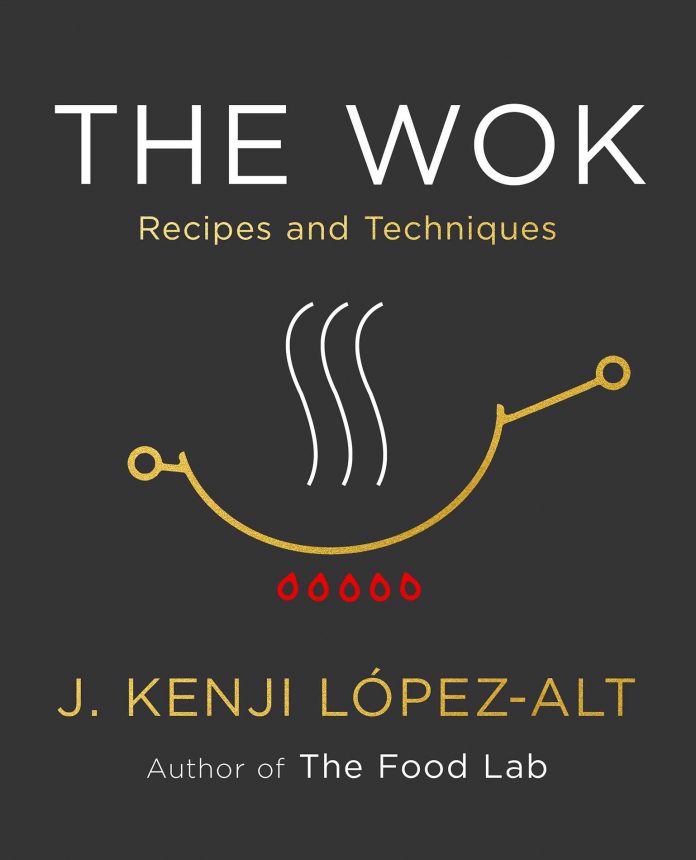
By MARK KENNEDY
AP Entertainment Writer
NEW YORK (AP) — Chef and food writer J. Kenji López-Alt suspects there’s something in your kitchen that you’re not using near enough — the wok.
The Asian deep-bottomed pot is his versatile go-to cooking tool for everything from Korean-style pancakes to bacon and egg fried rice.
“Obviously people know them for stir fries,” he says. “But they’re also great for simmering, great for braising, great for steaming. I think they’re the best tool for both steaming and deep frying. You can make rice. There’s just a huge, huge amount of stuff you can do in this one pan.”
After spending much of the pandemic tinkering, López-Alt is offering his wisdom in “The Wok: Recipes and Techniques” from W.W. Norton & Company, a book with handy tips, fascinating asides and some 200 dishes.
“I think there’s only one recipe that calls for even turning on the oven. Everything else is just 100% done in one pan on your stovetop,” he says.
“The Wok” gives advice on the best oils to use, how to boil eggs, and how to approach stews and curries. It knocks down some myths, like the one that says only day-old rice makes good fried rice. There’s even a section on making soups in a wok, including egg drop, wonton, and hot and sour.
Lopez-Alt advises home chefs to get what he has — a 14-inch, flat-bottomed, carbon-steel wok, and says if you pay more than $50, you’re probably being overcharged. He bought his at a Target in the early 2000s.
That wok has adapted to each stage in his life. He bought it as a college student living with roommates, kept using it after moving in with his soon-to-be wife, and continues to cook with it now as a father. He says he pulls out the wok three or four times a week.
López-Alt is also the author of “The Food Lab: Better Homecooking Through Science,” a textbook-like cookbook with roots in scientific reason. The new book has similar rigorous testing, with fantastic detours into when to rinse rice, whether to use MSG, how to shop for shrimp and how different types of noodles behave.
“I find learning things is a lot easier when I learn the underlying principles behind them. And so I learned why I’m doing something as well as how,” he said.
López-Alt compares following recipes in a cookbook to asking directions on your phone from Siri — you get from point A to point B, but learn nothing about the neighborhoods or how they connect.
“I think knowing techniques and science is what sort of gives me the confidence to stray from recipes and know that I’m still not going to get lost and (will) end up with something edible and hopefully delicious,” he says.
His new book has the blessing of Grace Young, a fierce advocate of the wok, who has written the award-winning books “The Breath of a Wok” and “Stir Frying to the Sky’s Edge.” She welcomes wok-loving reinforcements, worried that the pot is at a crossroads, especially with the rise of nonstick, inauthentic versions.
“I’m really grateful to Kenji for writing this book because he can appeal to a much broader and younger audience than I can reach,” she says. “It means more woks get homes, more people are curious, and more people are appreciative of the fact that this pan is so special and so unique.”
The wok’s flared shape gives chefs a better angle to manipulate food than vertical walls on traditional pots, and it also reduces splatter. Its sides can be used to either protect food from the heat at the center or alternatively be a place that really heats up and provides a sizzle.
López-Alt had written in the kitchen-equipment chapter of “The Food Lab” that the wok was his go-to pan, but the final book never had recipes or advice because that section was edited out for space.
So when he started to tackle a second volume of “The Food Lab,” he started by revisiting the wok chapter and began expanding it. Then it took on a life of its own.
“I was like 200 pages in and I wasn’t done with stir-fries. So it felt like, ‘Hey, this is something I’m passionate about and I’ve found useful in my life, so maybe I should write a whole book and then other people will also find it useful,” he says.
He dispels some false impressions of wok cooking: It’s not true, he says, that you need jet flame, high-powered restaurant-style burners to cook properly with a wok.
“I go to Peter Luger’s in New York, right? And they have a steak that they cook under a 1,600-degree broiler. And it’s like a certain experience, right? I’m not expecting to be able to go home and cook the steak the exact same way,” he says.
“That’s just like a very particular restaurant style of cooking a steak. But that doesn’t mean there aren’t many other ways I can cook steak at home that are delicious.”



















